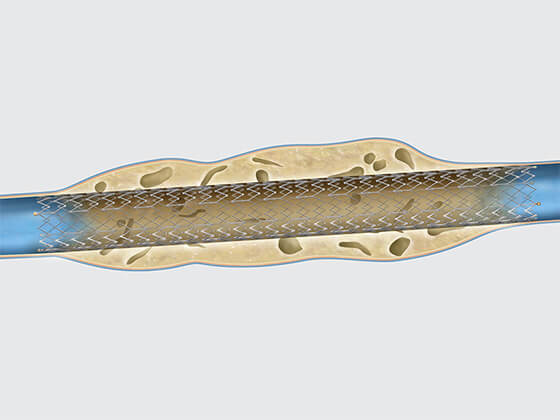Venoplasty and stent placement or, in some cases, open surgery may be necessary to treat iliofemoral venous outflow obstruction. Open surgery is not very common but is a treatment option for patients who can’t be treated with venoplasty and stent placement. Open surgery involves cutting your leg open to expose the affected vein. Once the vein has been exposed, your doctor will cut the vein open and will remove the blockage. After this, your doctor will stitch and close your vein and leg.
Venoplasty and stent placement are treatments to help restore blood flow through your blocked iliac and femoral veins. Before the procedure, your doctor may give you medicine to help you relax (sedation) and numbing medicine (local anesthetic), or your doctor may give you medicine to make you sleep through the procedure (general anesthetic). To access the vein, a small needle is inserted to the vein through a small incision in your leg. Your doctor may insert a special catheter into your vein that has a balloon attached to it. Your doctor can inflate this balloon inside your blocked vein. The balloon is designed to push soft blood clots and scar tissue against the vein wall. You might feel some pressure or pain when the balloon catheter is inflated. After the vein has been pushed open by the balloon, your doctor deflates it and pulls it out.
If the vein is too narrow after venoplasty, or your doctor thinks that venoplasty alone won’t keep your vein open, a stent may be placed in the blocked vein. A stent is a small, metal tube that lines the inside of the vein and helps keep the vein open and blood flowing easily. Like balloons, stents are delivered into the vein in a catheter. After the stent is expanded at the area of narrowing, your doctor will remove the catheter from your body.
Another balloon catheter may be used to further expand the size of the stent within the vein. Once placed, a stent remains in your body forever. The stent will help maintain blood flow to the heart.
